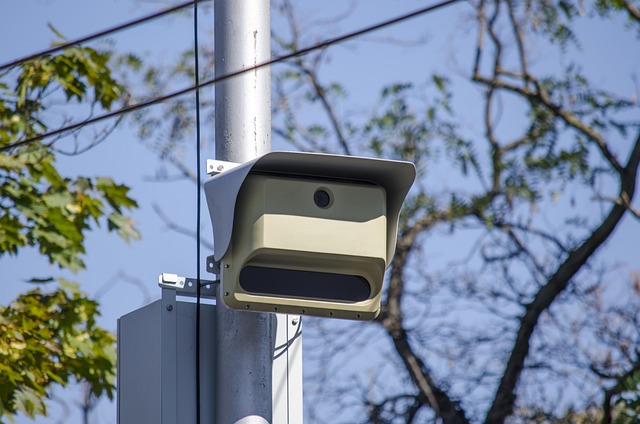Understanding road safety starts with driver behavior, emphasizing a safe mindset, minimizing distractions, and respecting pedestrians. Key tips include using appropriate car seats for toddlers and wearing seatbelts. It's a shared responsibility, requiring focused driving, regular breaks, and vehicle maintenance. Comprehensive strategies involve infrastructure like clear markings and technology such as automated speed cameras. Staying vigilant means awareness of surroundings, yielding to pedestrians, and understanding hazards like changing tires on highways. Regular checks and staying updated with vehicle safety features are vital for the Select Road Safety Tips outlined.
In the pursuit of saving lives, driving carefully is paramount. This article explores comprehensive road safety measures, focusing on the transformative impact of driver behavior. We delve into essential tips tailored for every driver, emphasizing responsible practices for safer roads. Additionally, we examine the critical roles of infrastructure and technology in creating a safe driving environment, while highlighting vigilance as a key strategy to prevent hazardous encounters. Discover these select road safety tips for a more secure journey.
- Understanding Road Safety: The Impact of Driver Behavior
- Essential Road Safety Tips for Every Driver
- Creating a Safe Driving Environment: Role of Infrastructure and Technology
- Staying Vigilant: Awareness and Prevention Strategies for Road Hazards
Understanding Road Safety: The Impact of Driver Behavior

Understanding Road Safety: The Impact of Driver Behavior
In today’s world, where distractions are omnipresent, it’s crucial to focus on road safety. One of the primary areas to consider is driver behavior. Safe driving isn’t just about following traffic rules; it’s about adopting a mindset that prioritizes the well-being of everyone on the road. The dangers of distracted driving statistics paint a stark picture: texting while driving increases your risk of crashing by 23 times. This underscores the importance of keeping our eyes on the road and our minds off non-essential tasks.
Additionally, being mindful of pedestrians’ rights at crosswalks and signals is vital. Respecting these rights not only ensures the safety of vulnerable users but also fosters a culture of shared responsibility. Furthermore, selecting the right car seat for toddlers can significantly reduce the risk of injury in case of an accident. By choosing appropriate car seats tailored to their age, weight, and height, parents can provide essential protection for their children during every ride.
Essential Road Safety Tips for Every Driver

Driving safely is a shared responsibility, and every driver has a crucial role in keeping themselves and others on the road secure. Here are some essential road safety tips to keep in mind while behind the wheel. First, always wear your seatbelt; it’s one of the simplest yet most effective ways to protect yourself in case of an accident. Next, maintain a safe distance from other vehicles, allowing ample space for sudden stops or lane changes. This is especially important during bad weather conditions.
Additionally, staying focused and avoiding distractions is paramount. This includes steering clear of mobile phones, food, or any activity that takes your attention away from the road. Regular breaks during long drives are also beneficial to combat fatigue. Knowing the signs of a fatigued driver—such as yawning, heavy eyes, or micro-sleeps—is key, and taking a break or swapping drivers can help prevent accidents caused by drowsiness. Moreover, staying up-to-date with vehicle maintenance is vital; ensuring your car is in good condition reduces the risk of breakdowns and enhances safety. Consider senior driver refresher courses for older individuals to sharpen their driving skills and stay informed about changing road regulations.
Creating a Safe Driving Environment: Role of Infrastructure and Technology

Creating a Safe Driving Environment involves a multifaceted approach where infrastructure and technology play pivotal roles. Quality road design and maintenance are essential Road Safety Tips, ensuring clear markings, well-lit paths, and sturdy barriers to prevent accidents. Advanced technologies like automated speed cameras, intelligent transport systems (ITS), and real-time traffic monitoring can significantly enhance safety by deterring dangerous driving behaviors and providing timely warnings.
For instance, promoting bicycle safety rules for kids and senior driver refresher courses benefits can further mitigate risks. Safe winter driving practices every motorist should know, such as adjusting driving techniques to slippery road conditions, are crucial considerations that contribute to a more secure overall driving environment.
Staying Vigilant: Awareness and Prevention Strategies for Road Hazards

Staying vigilant is a key aspect of road safety, especially with various unforeseen hazards present. Drivers must remain constantly aware of their surroundings to prevent potential risks. This includes being alert during both day and night driving, as conditions can change rapidly. Following pedestrian safety guidelines is also crucial; always yield to pedestrians and be cautious near schools or zones with high foot traffic.
One common cause of accidents is often underestimated: changing tires on the highway. It’s a necessary task but can be risky if not done properly. Reducing these risks involves preparing beforehand, ensuring your vehicle is in good condition, and carrying essential tools for quick fixes. Regular maintenance checks and staying updated with vehicle safety features can significantly prevent common traffic accidents.
By adopting safe driving habits, staying vigilant on the road, and implementing essential road safety tips, we can collectively save lives. Navigating our roads requires a shared commitment to responsible behavior and a proactive approach to infrastructure development. Let’s embrace these select road safety tips as a community, ensuring a safer and more secure future for all.
